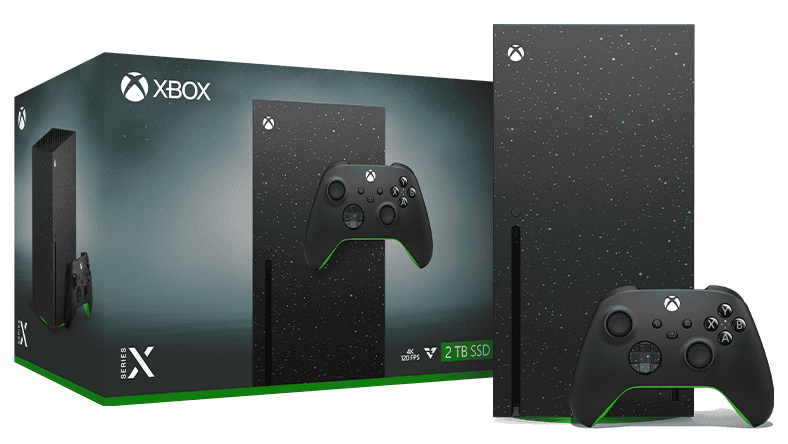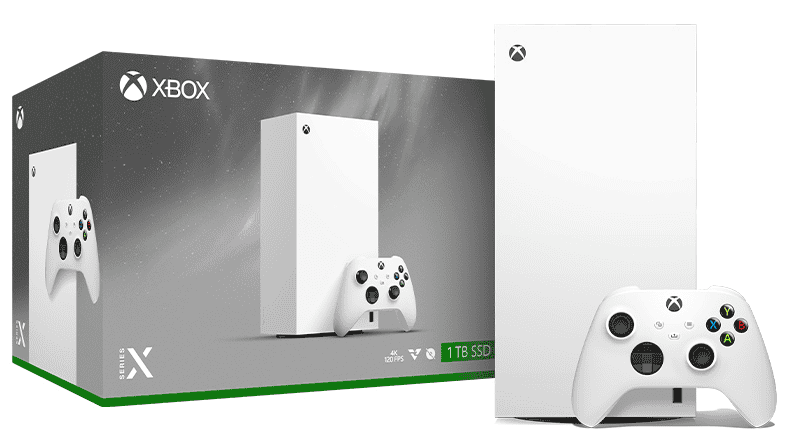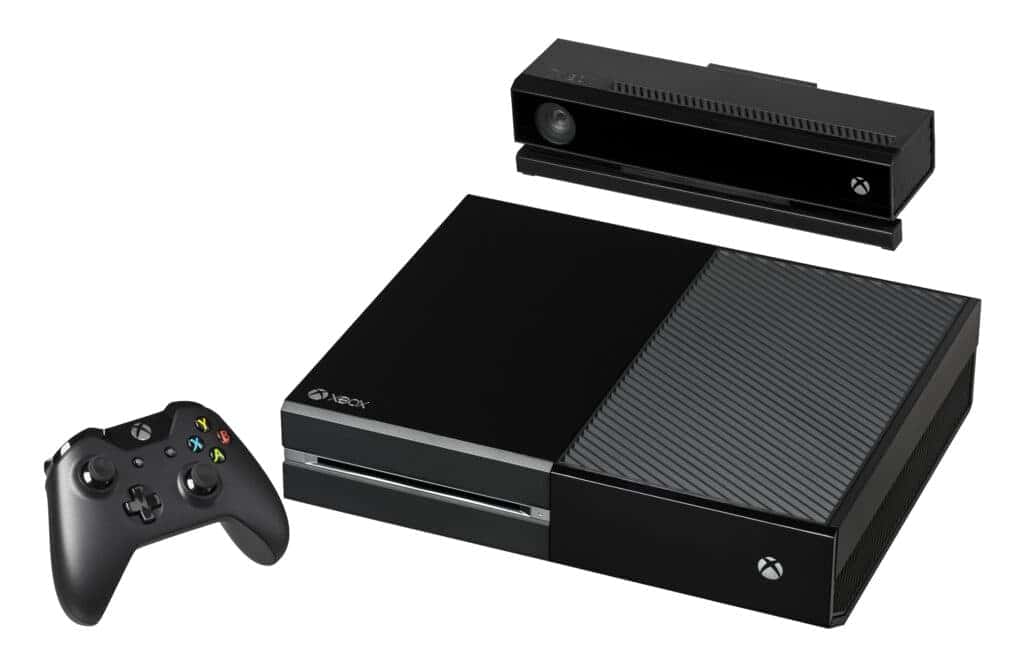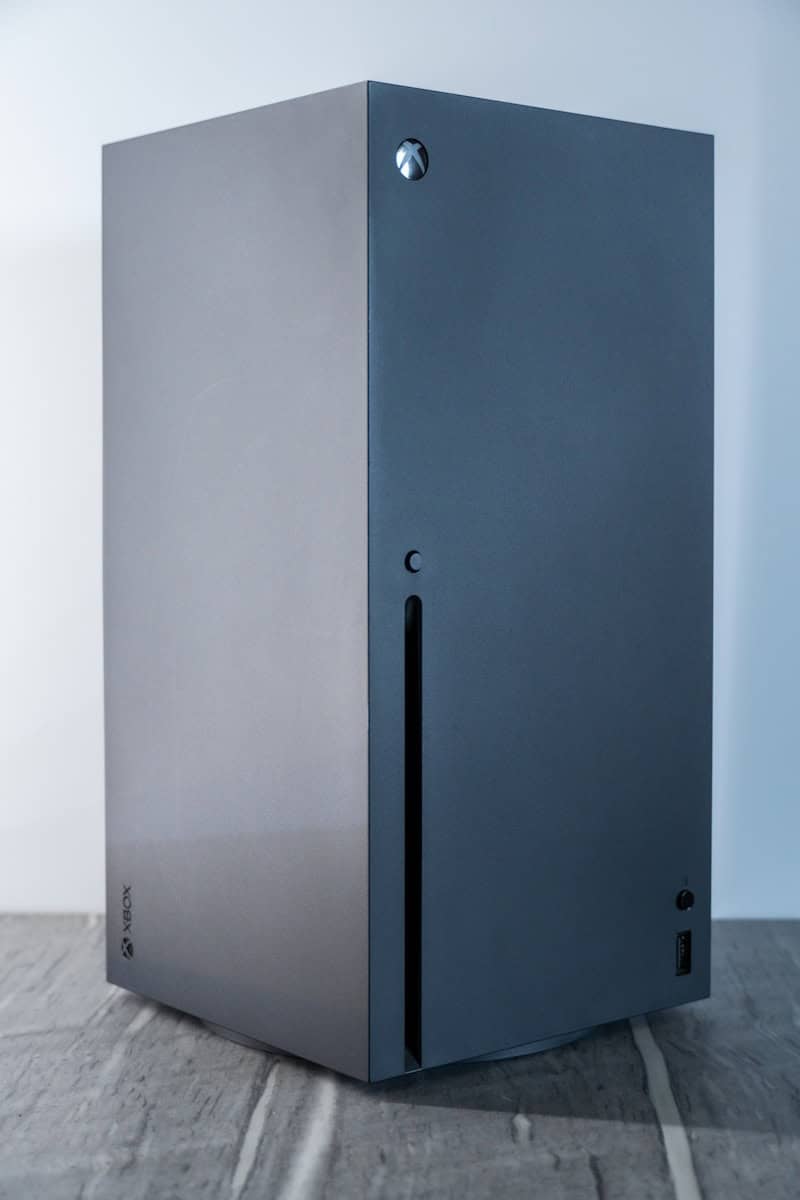When Microsoft launched the original Xbox in 2001, few could have predicted how the brand would grow to become a powerhouse in the gaming world. Jumping into a market dominated by Sony and Nintendo—who already had a combined 17 years of console experience—was a risky move for a company best known for its Windows operating system and productivity software.

Yet, Microsoft’s ambitious vision and deep pockets allowed it to innovate in ways that reshaped console gaming. From pioneering integrated online services with Xbox Live, to popularizing achievements, cross-platform play, and cloud gaming, Xbox has consistently pushed the envelope.
Over two decades and four major console generations later, the Xbox brand has evolved into an ecosystem that spans consoles, PCs, cloud gaming (Xbox Cloud Gaming via Game Pass Ultimate), and mobile devices. In 2024, Microsoft refreshed its flagship Xbox Series X|S lineup, further cementing its role in next-gen gaming.
This article takes you on a chronological journey through the complete history of Xbox consoles—from the green-and-black behemoth that started it all to today’s sleek, powerful machines. Along the way, we’ll explore key hardware innovations, iconic games, and how Xbox changed gaming forever.
Xbox Consoles in Chronological Order (2001–2024)
Microsoft has released a series of consoles over the years, each improving on its predecessor. Here’s a breakdown of every major Xbox console and its key details.
| Console | Release Date | Launch Price | Notable Features |
|---|---|---|---|
| Xbox | Nov 15, 2001 | $299 | First console with a built-in hard drive; introduced Halo: Combat Evolved. |
| Xbox 360 | Nov 22, 2005 | $299 | Xbox Live Arcade, achievements, wireless controller. |
| Xbox 360 Core / Arcade | Oct 23, 2007 | $279 | Budget model with HDMI support, flash memory, no hard drive. |
| Xbox 360 Elite | Apr 29, 2007 | $479 | 120GB HDD, HDMI output, black finish. |
| Xbox 360 S | Jun 14, 2010 | $299 | Slim design, integrated Wi-Fi, quieter operation. |
| Xbox 360 E | Jun 10, 2013 | $199 | Final 360 revision; streamlined design to resemble Xbox One. |
| Xbox One | Nov 22, 2013 | $499 | Multimedia hub; Kinect 2.0; TV integration. |
| Xbox One S | Aug 2, 2016 | $299 | Smaller, 4K UHD Blu-ray support, HDR gaming. |
| Xbox One X | Nov 7, 2017 | $499 | “Most powerful console” of its time; native 4K gaming. |
| Xbox Series X | Nov 10, 2020 | $499 | 12 TFLOPS GPU; 4K gaming up to 120 FPS; SSD for ultra-fast load times. |
| Xbox Series S | Nov 10, 2020 | $299 | Compact, all-digital, 1440p gaming, affordable next-gen option. |
| Xbox Series X (Digital Only) | Oct 15, 2024 | $449.99 | Series X without a disc drive; cheaper, for digital-first gamers. |
| Xbox Series X (2TB) | Oct 15, 2024 | $599.99 | Doubled storage; ideal for large game libraries. |
| Xbox Series S (1TB, Robot White) | Oct 15, 2024 | $349.99 | More storage and a sleek new color option. |
A Quick Copy-Paste List of Xbox Consoles (Release Years)
- Xbox – 2001
- Xbox 360 – 2005
- Xbox 360 Arcade – 2007
- Xbox 360 Elite – 2007
- Xbox 360 S – 2010
- Xbox 360 E – 2013
- Xbox One – 2013
- Xbox One S – 2016
- Xbox One X – 2017
- Xbox Series X – 2020
- Xbox Series S – 2020
- Xbox Series X (Digital Only) – 2024
- Xbox Series X (2TB) – 2024
- Xbox Series S (1TB, Robot White) – 2024
How Xbox Has Evolved Over the Years
🎮 The Original Xbox (2001): Microsoft’s Bold First Step
Launched in 2001, the Xbox marked Microsoft’s first foray into the console market. Boasting an Intel Pentium III processor and NVIDIA graphics, it was more powerful than Sony’s PlayStation 2. Its built-in hard drive eliminated the need for memory cards, and Halo: Combat Evolved became a killer app that turned Xbox into a household name.
✅ Key Innovations:
- First console with built-in Ethernet for broadband online gaming
- Xbox Live (launched 2002): Revolutionized online multiplayer and digital game distribution
- Popularized first-person shooters on consoles
🎮 Xbox 360 (2005): The Golden Era of Online Console Gaming
The Xbox 360 arrived in 2005 and became a massive success. It introduced achievements, Xbox Live Marketplace, and party chat, all of which helped define modern online gaming.
✅ Key Innovations:
- Xbox Live Arcade brought indie games into the mainstream
- Wireless controllers became standard
- Introduced Kinect (2010), which sold 35 million units and became the fastest-selling consumer device of its time
🎮 Xbox One (2013): Entertainment Hub to Gaming Powerhouse
The Xbox One struggled at launch due to its always-online DRM policies and mandatory Kinect bundling. However, Microsoft reversed course and, over time, redeemed the console with initiatives like backward compatibility, Game Pass, and a more gamer-focused approach.
✅ Key Innovations:
- Backward compatibility for Xbox 360 and original Xbox games
- Xbox Game Pass (launched 2017): A Netflix-style subscription service for games
- Enhanced performance with Xbox One X (2017), offering true 4K gaming
🎮 Xbox Series X|S (2020–2024): Next-Gen Speed and Power
With the Series X and Series S, Microsoft delivered two very different approaches to next-gen gaming. Series X is a powerhouse rivaling high-end PCs, while Series S offers affordability without compromising performance.
✅ Key Innovations:
- Velocity Architecture: Combines custom NVMe SSD and decompression to drastically reduce load times
- Smart Delivery: Buy a game once, play the best version across Xbox One and Series X|S
- Cloud gaming integration via Xbox Cloud Gaming (Project xCloud)
2024 Xbox Series X|S Refresh: What’s New?
In October 2024, Microsoft refreshed the Series X|S line with new models aimed at different types of gamers.
✅ Xbox Series X (Digital Only)
- Price: $449.99
- What’s New?: No disc drive, lower cost. Targets the growing audience of digital-only gamers.
✅ Xbox Series X (2TB)
- Price: $599.99
- What’s New?: Double the storage of the original Series X. Perfect for gamers who juggle large games like Call of Duty, Starfield, and Forza Motorsport.
✅ Xbox Series S (1TB, Robot White)
- Price: $349.99
- What’s New?: Doubles the Series S’s storage to 1TB and adds a slick new color option.
Hardware Evolution Across Generations
| Generation | CPU | GPU | RAM | Storage |
|---|---|---|---|---|
| Xbox | Intel Pentium III 733 MHz | NVIDIA NV2A | 64MB DDR | 8–10GB HDD |
| Xbox 360 | Custom 3-core PowerPC 3.2GHz | ATI Xenos | 512MB GDDR3 | 20GB–500GB HDD |
| Xbox One | AMD 8-core 1.75GHz | AMD GCN 1.31 TFLOPS | 8GB DDR3 | 500GB–2TB HDD |
| Xbox Series X | AMD Zen 2 8-core 3.8GHz | RDNA 2, 12 TFLOPS | 16GB GDDR6 | 1TB Custom NVMe SSD |
| Xbox Series S | AMD Zen 2 8-core 3.6GHz | RDNA 2, 4 TFLOPS | 10GB GDDR6 | 512GB–1TB Custom NVMe SSD |
Innovations That Changed the Game
- Xbox Live (2002): Standardized online console gaming
- Achievements (2005): Sparked the modern trophy/achievement systems
- Kinect (2010): Pioneered controller-free motion gaming
- Backward Compatibility (2015): Play older games without repurchasing
- Xbox Game Pass (2017): Subscription model reshaping game distribution
- Cloud Gaming (2020): Play AAA games on mobile devices via xCloud
- Cross-Play: Bridging Xbox, PC, and even PlayStation players in online games
Looking Ahead: What’s Next for Xbox?
Microsoft’s acquisition of Activision Blizzard in 2023 for $68.7 billion signals a content-first strategy. Expect future Xbox initiatives to prioritize Game Pass growth, cloud gaming expansion, and exclusive titles like The Elder Scrolls VI and Fable 4.
With rumored development on a next-gen Xbox console already underway (targeting a potential 2028 release), the future looks promising for Xbox gamers.
Overall
From its underdog beginnings to its current role as a major force in the gaming world, Xbox’s journey has been one of innovation and resilience. Whether you’re a fan of high-performance hardware, digital downloads, or subscription services like Game Pass, Xbox has something to offer.
And as the console wars heat up in 2024 and beyond, one thing is clear: Microsoft is betting big on giving gamers more ways to play—anytime, anywhere.
Xbox Consoles in Order
Microsoft has been a significant player in the console market since the early 2000s but that still put them behind their major competitors (Sony and Nintendo) who had been doing it long before. Through consistent innovation and a lineup of successful exclusives, particularly the Halo series, Microsoft was able to quickly catch up and expand its market with each new console release. Here’s a table showcasing all the Xbox consoles released to date, in order of release:
| Console | Release Date | Launch Price | Notes |
|---|---|---|---|
| Xbox | November 15, 2001 | $299 | |
| Xbox 360 | November 22, 2005 | $299 | |
| Xbox 360 Arcade | October 23, 2007 | $279 | Introduced a lower-priced entry point with HDMI Port and smaller hard drive. |
| Xbox 360 Elite | April 29, 2007 | $479 | Featured a black finish, larger hard drive, and HDMI port. |
| Xbox 360 S | June 14, 2010 | $299 | Slimmer design, built-in Wi-Fi, and quieter operation. |
| Xbox 360 E | June 10, 2013 | $199 | Final revision, even more compact and budget-friendly. |
| Xbox One | November 22, 2013 | $499 | Available for $399 without the Kinect device. |
| Xbox One S | August 2, 2016 | $299 | Smaller, supported 4K video playback and HDR. |
| Xbox One X | November 7, 2017 | $499 | Significantly more powerful, capable of native 4K gaming. |
| Xbox Series X | November 10, 2020 | $499 | Flagship console, focused on high-fidelity gaming. |
| Xbox Series S | November 10, 2020 | $299 | Digital-only, more affordable option for next-gen gaming. |
| Xbox Series X (Digital Only) | October 15, 2024 | $449.99 | Disc-less version of the Series X. |
| Xbox Series X (2TB) | October 15, 2024 | $599.99 | Special edition with increased storage capacity. |
| Xbox Series S (1TB, Robot White) | October 15, 2024 | $349.99 | Increased storage and a new color option. |
Here’s a list in case you need to copy-paste it:
- Xbox – November 15, 2001
- Xbox 360 – November 22, 2005
- Xbox 360 Arcade – October 23, 2007
- Xbox 360 Elite – April 29, 2007
- Xbox 360 S – June 14, 2010
- Xbox 360 E – June 10, 2013
- Xbox One – November 22, 2013
- Xbox One S – August 2, 2016
- Xbox One X – November 7, 2017
- Xbox Series X – November 10, 2020
- Xbox Series S – November 10, 2020
- Xbox Series X (Digital Only) – October 15, 2024
- Xbox Series X (2TB) – October 15, 2024
- Xbox Series S (1TB, Robot White) – October 15, 2024
Additional Notes:
- The Xbox 360 had numerous revisions throughout its lifespan, with different storage capacities and features. The table lists the most common models.
- The Xbox One also had several revisions, such as the Xbox One S All-Digital Edition and the Xbox One X Project Scorpio Edition.
- The Xbox Series X and Series S are the latest generation of Xbox consoles, offering significant improvements in performance and graphics.
History of Xbox Consoles
Original Xbox (2001)
The original Xbox made its debut on November 15, 2001. At the time, this was a pretty bold and unexpected move from Microsoft, given how entrenched they were on everything PC. They jumped right in against Sony’s PlayStation 2 and Nintendo’s GameCube which came from much more established brands. , The Xbox, however, was a beast and carved out a space for itself with powerful hardware and the highly successful game Halo. It was notably the first console sold by an American company since the Sega Dreamcast.
- Launched: November 15, 2001
- Key Features: Introduced the Xbox brand, featured a built-in hard drive, and popularized online console gaming with Xbox Live.
Xbox 360 (2005)
Following up, the Xbox 360 launched on November 22, 2005, and saw monumental success. Microsoft’s console stood out for its extensive online features and a strong library of games. It was also known for its redesigned user interface, which made it not just a gaming machine but a center for all types of digital entertainment.
- Launched: November 22, 2005
- Key Features: Sleeker design, improved graphics, introduced achievements, and expanded Xbox Live’s capabilities.
Xbox 360 S (2010)
- Launched: June 14, 2010
- Key Features: Slimmer and quieter version of the Xbox 360 with a built-in Wi-Fi adapter and a touch-sensitive power button.
Xbox 360 E (2013)
- Launched: June 10, 2013
- Key Features: A further redesign of the Xbox 360 with a more streamlined look and a matte finish.
Xbox One (2013)

The Xbox One was released to the public in 2013 as a comprehensive entertainment system. Microsoft integrated live TV, streaming services, and the Kinect sensor to make it more than a game console, albeit with very mixed results. Despite a rocky start due to initial policies and pricing, the Xbox One steadily gained ground with continuous updates and a growing list of games.
- Launched: November 22, 2013
- Key Features: Powerful hardware, focus on entertainment features like TV integration, and the introduction of the Kinect 2.0 motion sensor.
Xbox One S (2016)
- Launched: August 2, 2016
- Key Features: Slimmer and more energy-efficient version of the Xbox One, supported 4K video playback and HDR gaming.
Xbox One X (2017)
- Launched: November 7, 2017
- Key Features: Marketed as the “world’s most powerful console,” offered true 4K gaming and enhanced performance for existing Xbox One games.
Xbox Series X/S (2020)
The latest generation, Xbox Series X and S, launched in November 2020 and really brought gaming into the modern age. These consoles introduced features like lightning-fast load times, high frame rates, and backward compatibility – but Microsoft seemed to lag behind Sony a bit on the sales side. After heavy initial optimism, the gap between Xbox and PS5 sales started to widen in favor of Sony.
Xbox Series S (2020)

- Launched: November 10, 2020
- Key Features: Digital-only console, compact design, affordable entry point into next-gen gaming, supports 1440p gaming and up to 120 FPS.
Xbox Series X (2020)
- Launched: November 10, 2020
- Key Features: Microsoft’s flagship console, boasts powerful hardware for 4K gaming at up to 120 FPS, features a disc drive for physical games and media.
Xbox Series X/S Refresh (2024)

Microsoft is giving gamers more options than ever with a trio of refreshed Xbox Series X|S consoles launching on October 15th, 2024. Whether you’re a digital devotee, a storage-hungry enthusiast, or simply crave a sleek new look, there’s a console tailored to your needs. Let’s break down the choices:
1. Digital-Only Xbox Series X: Embrace the Download
Cutting the cord has never been more appealing. The new digital-only Xbox Series X delivers all the power of the flagship console at a lower price point ($449.99). By ditching the disc drive, Microsoft makes the Series X more accessible for gamers who prefer the convenience and instant gratification of digital downloads.
2. 2TB Xbox Series X: Storage Space Galore
Modern games demand serious storage. Recognizing this, Microsoft introduces a special edition Xbox Series X boasting a massive 2TB internal SSD. This behemoth ensures you’ll have ample room for your ever-growing game library, eliminating the need for external drives or constant deletion.
3. 1TB Xbox Series S in Robot White: A Fresh Coat of Paint (and More Storage!)
The ever-popular Xbox Series S gets a stylish makeover with a new “Robot White” color option. But the changes aren’t just skin deep. This refreshed Series S also doubles the internal storage to 1TB, providing more space for your games and media.

Technical Specifications and Design
From its humble beginnings to the powerful machines of today, the Xbox has come a long way. With each new generation, Microsoft has pushed the boundaries of gaming technology, providing players with increasingly immersive and engaging experiences. As the gaming landscape continues to evolve, it will be exciting to see what the future holds for the Xbox brand.

Hardware Evolution
The original Xbox was released in 2001 with an Intel Pentium III processor and NVIDIA NV2a graphics processing, offering a significant step forward in home console gaming with 64 MB of DDR SDRAM. As technology progressed, the Xbox 360 was launched in 2005, featuring an ATI Xenos GPU. Later, the Xbox 360 S and E models included improvements in CPU and GPU efficiency. The Xbox One further improved these aspects with an AMD processor, integrating both CPU and GPU for better performance. The latest Xbox Series X and S models have introduced even more advanced processors and GDDR6 memory, which have pushed gaming capabilities to new heights.
Innovations
The original Xbox had a big and uncomfortable controller. The Xbox 360 improved this by introducing a more comfortable and wireless controller. The controllers have since been upgraded with better headset compatibility and design. The Xbox One controller continued this trend with improved button layout and trigger sensitivity. Each new generation gets its own redesigned controller, and they have generally improved over time.The original Xbox was the first console with a standard hard drive, replacing memory cards. The Xbox 360 had expandable storage with detachable hard drives and later built-in storage options. The Xbox One moved to larger internal hard drives and support for external USB storage.
The Series X improved further with ultra-fast SSD storage, reducing load times and enabling quicker gameplay.
Xbox consoles have evolved in terms of power, visual, and audio performance. The original Xbox supported composite and component video output with 5.1 surround sound. The Xbox 360 introduced HDMI output and later supported 1080p HD resolutions. Xbox One and its successors have embraced 4K resolution and HDR for stunning visuals. In terms of audio, they have adopted advanced technologies to create immersive 3D spatial sound environments.







